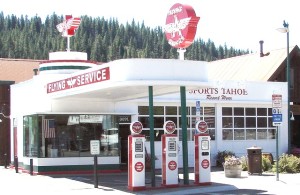Service-Oriented Architecture (SOA) is an approach for abstracting enterprise software capabilities as reusable services in order to support more flexible business processes and ideally, more agile organizations. SOA was one of the hottest topics in information technology (IT) back offices and enterprise vendor marketing departments for a number of years back in the 2000s.
However, in retrospect the original promise of SOA was largely unrealized at that time. Vendors used the approach to sell middleware, which led to expensive and difficult implementations. The architectural focus on improving IT and organizational governance in order to achieve greater levels of business agility was largely subsumed into the technical minutiae of enterprise integration.
Then along came cloud computing and SOA was no longer the cool kid on the block. Vendors and their hype-driven marketing teams quickly dropped SOA from their product lines, replacing it with cloud and big data and now Internet of things. It seemed that SOA was nothing more than a difficult step on the road to better approaches, a learning opportunity to be relegated to the technology history books.
Now that the hype surrounding SOA has long since blown over, however, we can shine the light on the reality. SOA never went away. “Over years of surveys, only 2% to 3% of those trying SOA have decided to give it up,” according to Randy Heffner, VP & Principal Analyst at Forrester Research. “The tales of SOA’s failure and demise are simply wrong.”
In fact, SOA is going stronger than ever, as organizations adopt SOA enterprise-wide. “Moving to a Service-Oriented Enterprise is a journey,” says Sundar Ramanathan, Manager of IT Advisory and enterprise architect for global professional services firm Ernst & Young. “However, modern business drivers of cost, globalization, and agility make this easier to understand and justify.”
Yet, this enterprise context for SOA has been a hard-fought battle, as the path to success with enterprise SOA typically begins at the departmental level and builds from there, as opposed to trying to boil the enterprise ocean with SOA.
 “The main change is that instead of going ‘enterprise-wide’ with a massive strategy and calling in Accenture and others to ‘solve’ the ‘SOA problem’ or lay out a grand architecture, the customer wants to solve tactical problems fast,” according to Atul Saini, CEO of middleware vendor Fiorano Software. “The pressures of cloud, social computing and mobile devices make rapid delivery of projects even more critical.”
“The main change is that instead of going ‘enterprise-wide’ with a massive strategy and calling in Accenture and others to ‘solve’ the ‘SOA problem’ or lay out a grand architecture, the customer wants to solve tactical problems fast,” according to Atul Saini, CEO of middleware vendor Fiorano Software. “The pressures of cloud, social computing and mobile devices make rapid delivery of projects even more critical.”
In fact, the larger shift in focus from back-office integration and middleware concerns to customer-driven digital initiatives has both changed the priorities for many SOA initiatives as it has driven SOA maturity overall. “The problem with SOA was that the entire concept was ‘sold’ to the enterprise as a complex technology or process,” continues Saini. “The ‘services’ in classic SOA tended to be way too large and dev teams spend months just on interface specifications.”
Read the entire article at http://www.forbes.com/sites/jasonbloomberg/2015/02/09/service-oriented-architecture-enabler-of-the-digital-world/.
Intellyx advises companies on their digital transformation initiatives and helps vendors communicate their agility stories. As of the time of writing, Fiorano Software is an Intellyx customer, but provided no input to this article other than Atul Saini’s quotes. All other organizations mentioned are not Intellyx customers. Image credit: Don Graham.



